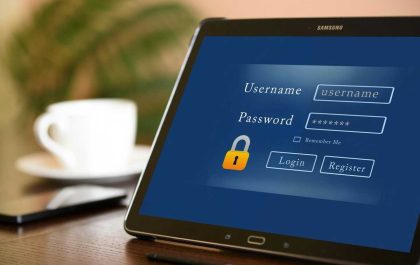Payroll Software: Managing remote teams presents several challenges for leaders and HR departments. Effective communication, project management, onboarding, and payroll can look quite different for remote versus onsite workers. Differences in time zones, local tax regulations, and employee classification laws impact how companies hire and maintain a remote workforce.
While remote teams don’t have in-person access to those responsible for their paychecks and benefits, technology can bridge the gap. Payroll software solutions can be much more than a way to send compensation to employees and independent contractors. Listed below are four ways remote workers can benefit from the use of payroll software.
Table of Contents
Toggle1. Complete Onboarding Documents
When hiring remote employees or contractors, there’s paperwork that establishes them as members of the team. This can include W-2 and 1099 forms for income taxes and contracts that spell out professional roles and obligations. With team members located in different states or countries, collecting this paperwork can become a logistical nightmare.
Mailing or emailing documents back and forth and requiring notaries to verify identities and signatures can cause delays. Many companies can’t afford to lose training and onboarding time to bottlenecks from overdue or lost paperwork. That’s where a global payroll solution like Remote can resolve many of the documentation issues associated with hiring remote team members.
When hired, remote workers can view and digitally sign their contracts and required forms. If full-time employees aren’t required to sign contracts per local labor laws, the pay stub generator software can present offer letters instead. New team members can access these documents through the platform and reach out to an HR representative if they have questions.
Remote workers can also verify their personal details are correct, make changes, and enter supplemental information. Once verified and signed, the documentation remains stored within the software. This helps HR organize important paperwork and makes it easily accessible to both companies and remote workers.
2. Track Hours
Some companies hire remote workers who earn regular salaries or work on a per-project basis. However, some organizations hire hourly remote employees who must track their time to get paid. Payroll software can either have a built-in timekeeping feature or integrate with another virtual time clock solution.
Most of these time clock solutions allow employees to designate when they’ve started and ended work. After signing into the platform, hourly workers can virtually punch in and punch out. During their shifts, the time clock solution tracks the length of time employees are working. The hours for each pay period are stored in the software and utilized when it’s time to run payroll.
Employees can verify the number of hours recorded by the software each day or before HR finalizes paychecks. If there’s an error, most virtual timekeeping solutions allow managers or HR to correct the mistake. In some cases, remote teams might track and enter their hours manually into payroll or timekeeping software.
Creating a timekeeping policy that meets local regulations where employees work can help reduce confusion and potential abuse. Remote teams should also have instructions on what to do if virtual timekeeping software is not functioning. Manual backup methods, such as recording hours on a standardized spreadsheet, will need to be put in place. Procedures for who will enter those hours once the software is back online should also be clearly outlined.
3. Choose Benefit Packages
When remote team members come on board, they may be immediately eligible for certain benefits. This can include insurance, flexible spending accounts, retirement plans, and stock options. Remote workers don’t have the opportunity to attend in-person benefit meetings, but they still need to learn about their options.
Payroll solutions can provide explanations and details about offered benefits, which employees can read through via self-service portals. Some companies may choose to send out additional information through email or make documents available on other cloud-based platforms. Once employees are ready, they can go into the payroll software’s self-service portal to make their choices.
Payroll solutions will automatically sync information from remote team members’ elected insurance and retirement plan choices. Any employee contributions for 401(k) and insurance premiums will start being withheld from workers’ paychecks. In many self-service portals, employees can see how choosing different benefits will impact their net pay. They can make an informed decision, and there won’t be any surprises when they receive their compensation.
For benefits like retirement plans and life insurance, employees can designate their beneficiaries within the software. They can change and add beneficiaries when life changes occur. Employees can also indicate payout percentages for each beneficiary. For example, a worker may want 50% of a retirement plan payout to go to their spouse. They can then designate the remaining 50% to their adult children.
4. Manage Paycheck Options
Employees and contractors work to get paid, even if they love what they do. They’re bound to get upset when they don’t receive their paychecks on time or encounter payroll errors. Remote teams need a way to let companies know how and where they want to receive their checks. Many will opt for direct deposit, but that requires verification of bank accounts and authorizations.
Payroll solutions help remote workers opt into your company’s direct deposit benefit. Employees can enter their bank account information without having to submit a voided paper check. If they want to receive their paychecks in a savings account instead, they can. The software will verify the account information and let employees digitally sign any direct deposit disclosures and authorization forms.
Some payroll software also lets remote team members designate pay cards or digital wallet services for direct deposits. This can be a popular option for independent contractors who receive compensation from multiple clients. However, employees might also want this convenience, as digital wallet services are becoming popular substitutes for traditional checking accounts. With these services, international employees can also easily convert payouts to their local currencies.
Remote teams come with a unique set of challenges related to communication and variations in labor and payroll laws. As remote work arrangements continue to increase, companies can rely on tech tools to keep workers in sync. Payroll software, in particular, can empower remote teams to manage important aspects of their experience within the organization. These include onboarding documentation, hours worked, benefits, and direct deposit options.
Companies can clear remote team hurdles when employees and contractors have self-service opportunities through tech platforms. Doing so can create more seamless, time-sensitive, and positive experiences for managers and workers. In an age where technology can support remote teams, there’s little excuse to not let it fully facilitate working relationships.
Also Read: Learn When to Replace a Car Battery in BMW
Related posts
Hot Topics
What is Kafka Used For: A Complete Guide
What is Kafka used for? If you’ve been diving into the world of distributed systems, microservices, or data streaming, you’ve…
How Do Password Managers Work? The Guide That Finally Makes Sense
Ever wonder how do password managers work and whether they’re actually safe? I get it. The idea of putting all…



